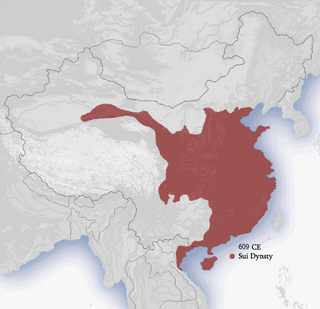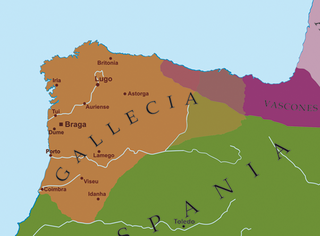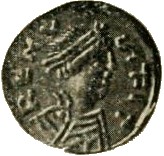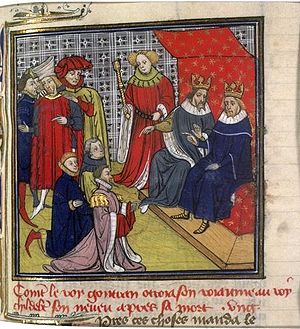
Emperor Sushun was the 32nd Emperor of Japan, according to the traditional order of succession.
The 610s decade ran from January 1, 610, to December 31, 619.
The 550s decade ran from January 1, 550, to December 31, 559.
The 560s decade ran from January 1, 560, to December 31, 569.
The 570s decade ran from January 1, 570, to December 31, 579.
The 580s decade ran from January 1, 580, to December 31, 589.
The 590s decade ran from January 1, 590, to December 31, 599.

Year 581 (DLXXXI) was a common year starting on Wednesday of the Julian calendar. The denomination 581 for this year has been used since the early medieval period, when the Anno Domini calendar era became the prevalent method in Europe for naming years.

Year 585 (DLXXXV) was a common year starting on Monday of the Julian calendar. The denomination 585 for this year has been used since the early medieval period, when the Anno Domini calendar era became the prevalent method in Europe for naming years.

Year 575 (DLXXV) was a common year starting on Tuesday of the Julian calendar. The denomination 575 for this year has been used since the early medieval period, when the Anno Domini calendar era became the prevalent method in Europe for naming years.
Year 580 (DLXXX) was a leap year starting on Monday of the Julian calendar. The denomination 580 for this year has been used since the early medieval period, when the Anno Domini calendar era became the prevalent method in Europe for naming years.

Childebert II (c.570–596) was the Merovingian king of Austrasia from 575 until his death in March 596, and the king of Burgundy from 592 to his death, as the adopted son of his uncle Guntram.

Sigebert I was a Frankish king of Austrasia from the death of his father in 561 to his own death. He was the third surviving son out of four of Clotaire I and Ingund. His reign found him mostly occupied with a successful civil war against his half-brother, Chilperic.
Brunhilda was queen consort of Austrasia, part of Francia, by marriage to the Merovingian king Sigebert I of Austrasia, and regent for her son, grandson and great-grandson.
The Soga clan was one of the most powerful aristocratic kin groups (uji) of the Asuka period of the early Japanese state—the Yamato polity—and played a major role in the spread of Buddhism in Japan. Through the 5th and 7th centuries, the Soga monopolized the kabane or hereditary rank of Great Omi and was the first of many families to dominate the Imperial House of Japan by influencing the order of succession and government policy.
Soga no Iname was a leader of the Soga clan and a statesman during the reign of Emperor Kinmei in the Asuka period. He was the first person to hold the position of Ōomi that can be verified with reasonable accuracy, in 536 A.D. Essentially what this means: Japan's first head of government with the Ōkimi as head of state.
The Mononobe clan was a Japanese aristocratic kin group (uji) of the Kofun period, known for its military opposition to the Soga clan. The Mononobe were opposed to the spread of Buddhism, partly on religious grounds, claiming that the local deities would be offended by the worshiping of foreign deities, but also as the result of feelings of conservatism and a degree of xenophobia. The Nakatomi clan, ancestors of the Fujiwara, were also Shinto ritualists allied with the Mononobe in opposition to Buddhism.

Mononobe no Moriya was an Ō-muraji, a high-ranking clan head position of the ancient Japanese Yamato state, having inherited the position from his father Mononobe no Okoshi. Like his father, he was a devoted opponent of Buddhism, which had recently been introduced to Japan from the continent.
The Soga–Mononobe conflict was a political and military dispute that took place in Japan during the Asuka period between the pro-Shinto Mononobe clan, led by Mononobe no Moriya, and the pro-Buddhist Soga clan, led by Soga no Umako, which would eventually emerge victorious.







